 |
|||||||||||||||
Apollo 13: A Giant Leap for IMAX The classic movie about survival in space gets a whole new look for the 21st Century Michelle Evans, October 2002
“Houston, we have a problem.” These famous words have been familiar to those who follow the space program since they were first uttered over 32 years ago. They truly entered the general public’s consciousness in 1995 when Tom Hanks made them famous playing astronaut Jim Lovell in Ron Howard’s film “Apollo 13.”
Now, seven years later, we are about to revisit this infamous Moon mission as the IMAX Corporation introduces a whole new way of creating films for their large format theaters.
Previously if a director wanted to make a movie in the IMAX format it took a very large camera to do so. (IMAX film is 10 times the size of 35mm film.) This restricted where the camera could go. It is truly amazing what places they have been able to take audiences when the technical challenges are understood. Now, however, a whole new realm of IMAX movies opens up due to the innovative software called IMAX® DMR™ (Digital Re-Mastering). A movie originally shot in standard 35mm format can now be run through the DMR process and come out the other end looking as if IMAX equipment was used from the opening shot. As a test of the software, IMAX approached Ron Howard and Brian Grazer of Imagine Entertainment with the idea of converting “Apollo 13.”
As Ron Howard explained to O.C.Space in an exclusive interview: “I was instantly excited about it, but then, literally, a few moments later, I sagged because I thought, I bet they’re not ready with this technology and I’ll bet I’m going to have to be the one that says ‘It looks great on paper, but it’s not right for our movie.’ I was really worried that the movie would not adapt well. I was wrong and I was thrilled to be wrong.”
Six months ago members of the press were invited to see the same test footage that had convinced Ron to go ahead with the project. The difference between the original film and the new IMAX footage was spectacular and we requested to be a part of the premiere event by placing our OCSS display in the lobby of the Universal CityWalk theaters.
Working with Warren Betts, Jeff Zarillo, and Luis Castro, the event came together. On September 11, while the rest of the country was watching television coverage of the one year anniversary of the 9-11 attacks, several members and friends of OCSS put in the display at the theater. We are just a few feet inside the main door so everyone who enters will see our display, even if they are going to different theaters within the megaplex. Hopefully after seeing our models and artifacts they will decide to check out the movie.
Some of the items in our case this time include Kevin Newman’s dramatic model of the Apollo 13 spacecraft that shows the explosion in the Service Module. Jim Busby lent us some movie stills, real NASA documents, and a urine collection bag used in a famous scene of the movie. My own models of the Saturn V launch vehicle and the Lunar Module, that should have landed Jim Lovell and Fred Haise in the Fra Mauro region of the Moon in April 1970, were placed in the case.
Special thanks must go to Cherie Rabideau who procured table covers for us at the last second from a local restaurant when it was discovered that none were available. Without those, our display would have been impossible. The day after the display case went up, Universal hosted a full-blown Hollywood red carpet premiere event for “Apollo 13.”
Present were numerous cast and crew members from the movie, including Producer Brian Grazer, Director Ron Howard, and star Tom Hanks. Also there from the cast were Kathleen Quinlan, Gary Sinise, Clint Howard, Rance Howard, Brett Cullen, and Jim Ritz. Many other Hollywood celebrities attended, wanting to be a part of the liftoff for a possible major change in the direction future movies might take.
A major difference seen at this event was that not all of the celebrities were from the motion picture world. In addition to the movie astronauts, we also got real ones. In this case it was Space Shuttle pilots Mark Kelly and Mark Polansky.
It was great to see the response of the crowd in that these two seemed as much in demand as Hanks, Howard, or Sinise. In fact, I was told by some people that going to a Hollywood premiere was sort of old hat, but seeing the real astronauts made it worthwhile and a real stand-out event.
Both astronauts, along with Ron Howard and Tom Hanks, all had a chance to check out our display in the lobby and gave it high marks.
“That was really something. I didn’t know those models existed,” Ron mentioned during our interview. “Tom and I were really admiring that. That’s great stuff. Beautiful.”
Two days after the premiere, Cherie and I had the chance to talk with Ron in Century City. He shared his thoughts and feelings on making the movie and how he saw the translation of his work to IMAX.
“I love any movie that transports you and there is something enveloping in that [IMAX] medium.”
When it came to making the movie, he said that for him “13” was a lucky number. “I almost like to think it’s the karma of the Apollo 13 crew. Their story was sort of shoved under the carpet, when in fact it was such a noble triumph that wasn’t really acknowledged at the time, and yet now their story just lives on and on and on. And now there’s this IMAX version that will introduce the story to a whole new generation and will hopefully play for some years to come in that IMAX cycle.”
The awareness of the space program in general seemed to go up after the initial release of “Apollo 13” in 1995. I asked Ron how he felt about the way the space program is portrayed in everyday life and how his movie might affect that.
“The International Space Station is cool and kids are aware of it. I hope that [“Apollo 13”] does something to renew interest. I was for Lance Bass going into space! Anything that stimulates people’s imagination about the possibility for further exploration is a great thing in my book.”
Ron also agrees with the basic philosophy of the Orange County Space Society when he mentioned, “I’m not sure that tourism should be NASA’s job. So I think it is time for private enterprise to step in and make it work.”
Because of the compelling nature of “Apollo 13” in the IMAX format, maybe more people will step up and take notice. The brighter the success of this release, the better the chance that real space exploration will be accepted and acted upon.
At an earlier press conference, Tom Hanks told us how he felt that humanity may not make it back to the Moon for another 500 years. This is a depressing thought, but we can make a difference and ensure that this prediction does not come to pass.
Apollo 13 Soars So when all is said and done, how does “Apollo 13” in IMAX stack up against the original theatrical version? Overall, I would have to say that the experience could blow your socks off.
Having the opportunity to see a regular 35mm version of the movie projected on the large screen, followed by the digitally re-mastered version in full quality IMAX is an unbelievable experience. There is literally no comparison. The sharpness and clarity is phenomenal. Being a major fan of the original release, I have seen the movie many times in movie theaters and on video. The first time I saw the IMAX version, I was very surprised at all the new details that popped out at me.
The new version is a truly immersive experience. Even though not in 3D like the IMAX film “Space Station,” there is almost a quality of 3D since you are so close to the action and can see such amazing detail.
Ron Howard originally had reservations about this enlargement process and how human emotions might translate to such a large format. He explained that, “by their nature, it seems that people involved with the space program are reserved, understated, and it’s just the way they express themselves. Therefore the performances [in the movie] are understated.
“I was really blown away by how much more we seemed to be able to kind of look inside them with this format. I didn’t expect that. I didn’t expect it to be better human drama in this format. I expected it to be a better adventure movie, more of an action movie, and I think it’s those things as well. I never thought that watching Tom Hanks decide to give up the dream of the Moon and turn and decide that the mission was now to get home, I never realized that that could be more compelling.”
So in the end, he was very pleased with the outcome of the IMAX experience and I am sure that anyone from the Orange County Space Society will be as well.
Ron said, “I’d always dreamed of making an IMAX movie and after I saw the tests, I remember thinking to myself, who knew I’d already made one!”
After coming out of the theater, he expressed a view that I think many of us would share “I sort of floated out of the IMAX theater after watching it. It was very moving and really exciting.”
I asked him if he would have changed anything if he’d known it was going to be in an IMAX format to start with. He replied, “Not really. That’s kind of the good news, the transfer for my money works. I kind of feel like the movie always belonged on the IMAX screen. It’s almost too good to be true that it could have this sort of third life in this format.” XXXX |
||||||||||||
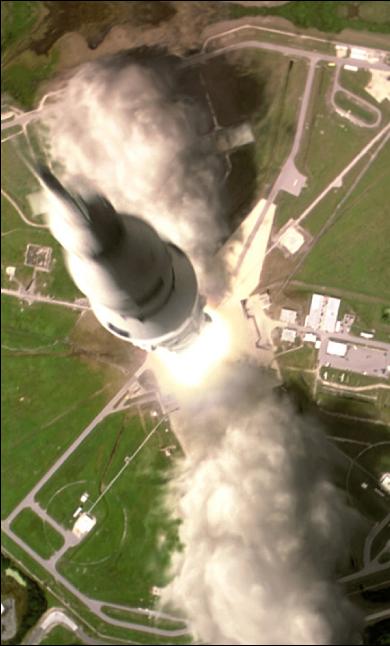 |
||||||||||||
|
||||||||||||
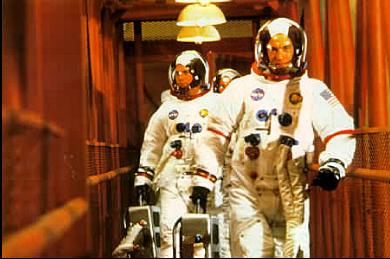 |
||||||||||||
|
||||||||||||
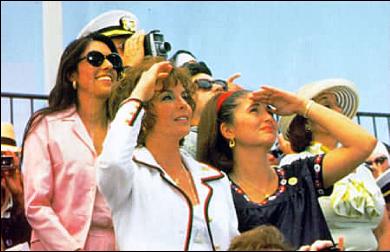 |
||||||||||||
|
||||||||||||
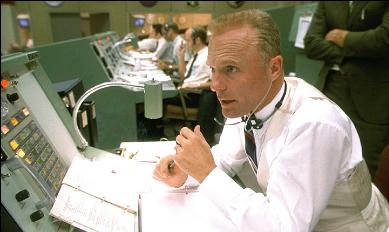 |
||||||||||||
|
||||||||||||
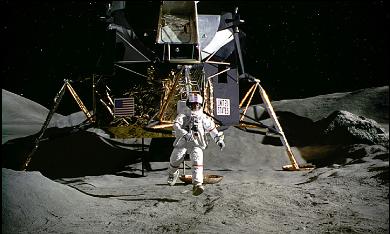 |
||||||||||||
|
||||||||||||